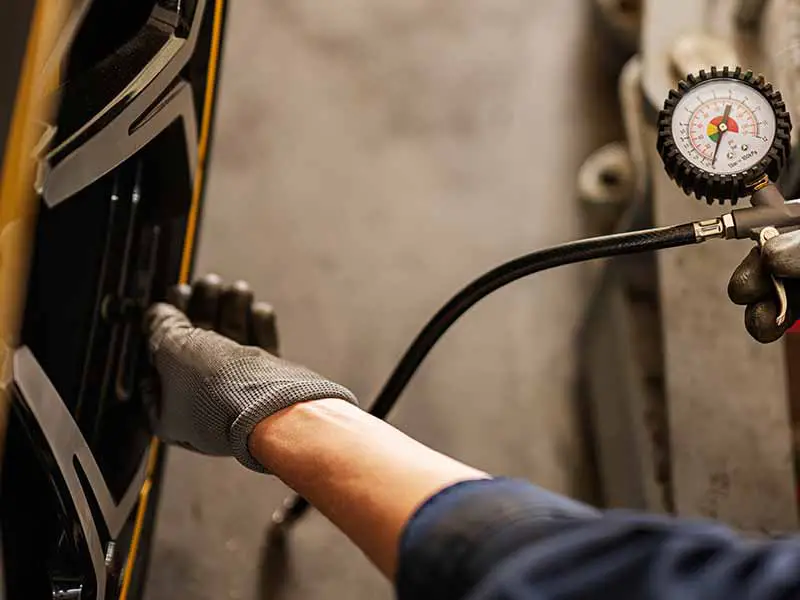Ever felt that wobble while driving and wondered if your car was about to turn into a breakdancing superstar? Tires, just like our moods, have their ups and downs – and when they’re down, it’s often due to low tire pressure. But what’s causing that?
What Causes Low Tire Pressure?
Low tire pressure is caused by cold weather, slow leaks, natural air loss over time, or even a malfunctioning sensor.
The TPMS warning light turns on when the low tire pressure is 25% or more below the vehicle manufacturer’s recommended level.
In this article, we’ll explore the signs of low tire pressure, the risks involved, and how different seasons impact your tire’s air. Plus, we’ll guide you on what to do when that pesky TPMS light warns you about low pressure.
Let’s take a closer look.
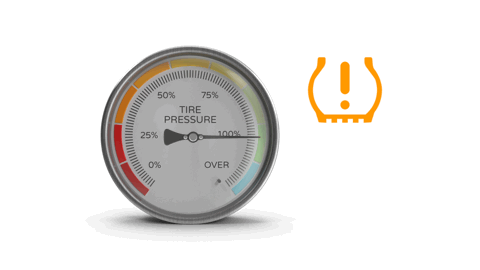
Common Causes of Low Tire Pressure
Ah, the dreaded low tire pressure light. One day you’re driving, singing along to your favorite song, and bam – that annoying little light pops up on your dashboard. What gives? Let’s figure out the usual suspects behind low tire pressure.
Natural Air Loss: Tires Are Like Us, They Age!
Just like how we might groan a bit more as we get older, tires naturally lose a bit of air over time. It’s just how they roll (pun intended!).
- Fact Check: Tires can lose about 1 PSI every month. Yep, just by sitting there.
- Pro Tip: Check your tire pressure every month. Your tires (and car) will love you for it.
Temperature Twists: How Weather Plays a Role
Believe it or not, tires are pretty sensitive to the weather.
- Cold Weather Woes:
- When the temperature drops, so does your tire pressure. It’s science stuff, but think of the air inside the tire like it’s hibernating, getting all snug and compact.
- For every 10°F drop, your tires might lose about 1 PSI.
- Summer Sizzle:
- Warm weather can actually increase tire pressure.
- But, remember those scorching hot days? The heat can make the air inside expand a bit too much, causing a slow leak.
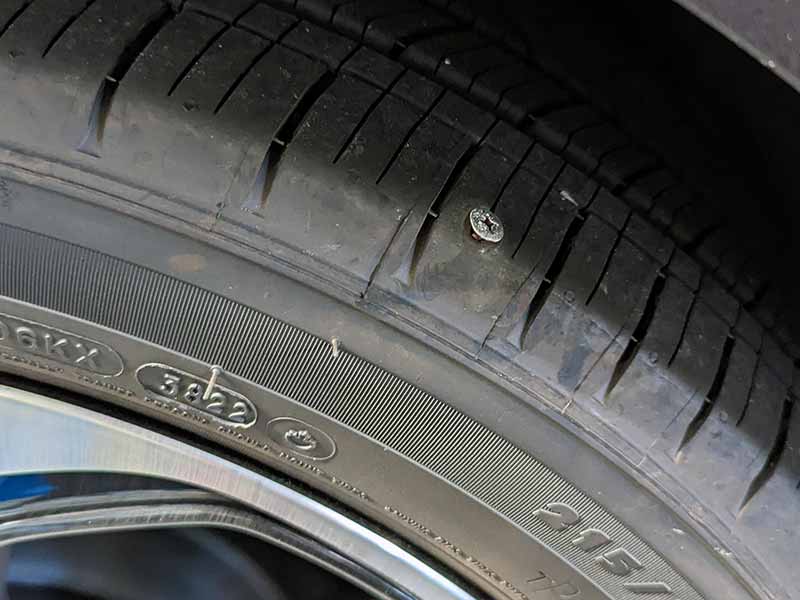
Punctures and Leaks
Small objects on the road can be like kryptonite to your tires. Even if you can’t see a nail or sharp stone, they might have done their sneaky damage.
- Slow Leaks: Tiny punctures can cause a slow, steady air loss. You might not even notice until that TPMS light pops on.
- Quick Fixes: If you suspect a puncture, get it checked. Many times, it’s a simple patch-up job!
Damaged Valve Stems
That tiny nozzle where you pump air? That’s a valve stem. And if it’s damaged or leaky, your tire can lose air.
- Watch Out For: Corrosion, cracks, or even just a missing cap.
- Why it Matters: They might be small, but a faulty valve stem can make a big difference in your tire’s pressure.
Tire Aging
Like a favorite pair of sneakers, tires wear out over time. Old tires can start to leak air more than their younger counterparts.
- Tire Birthday: Most tires live for about six to ten years. After that, they might need a retirement party.
- Check the Date: Tires have a “born on” date (it’s a code on the sidewall). Keep an eye on that to know your tire’s age.
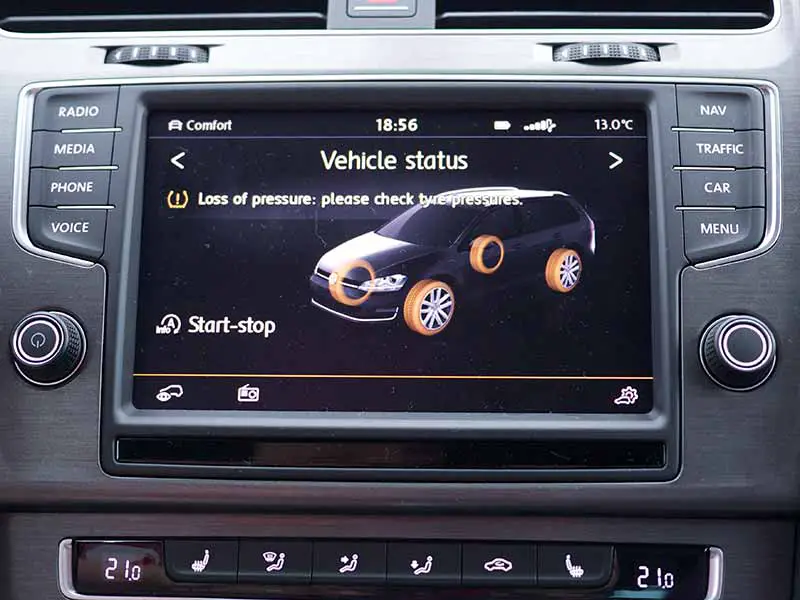
Tire Pressure Monitoring System (TPMS)
Imagine having a guardian angel, always looking out for you, ensuring you don’t step into potential trouble. That’s what the TPMS does for your vehicle’s tires. But how does this guardian function, and why is it so crucial? And does it replace our good old tire pressure gauge? Let’s dive in.
Why TPMS Matters
TPMS is more than just a fancy car feature; it’s a lifesaver, quite literally.
- Safety First: An underinflated tire can lead to reduced handling capabilities, longer stopping distances, and even blowouts. TPMS alerts you way before these dangers become a reality.
- Fuel Economy: As we’ve discussed, proper tire pressure can impact gas mileage. With TPMS, you’re notified if the pressure drops, potentially saving you at the pump.
- Longevity of Tires: Tires are an investment, and TPMS helps safeguard that investment by ensuring they wear evenly and last longer.
How TPMS Works
Without getting tangled in the techy jargon, here’s a bird’s-eye view of TPMS:
- Sensors Galore: Each tire (excluding the spare in most cases) has a sensor that constantly monitors the air pressure.
- Dashboard Buddy: If any tire’s pressure goes below the recommended level by a certain percentage, the sensor communicates this to your vehicle’s computer system. Result? A warning light pops up on your dashboard.

Craftsman V20 Inflator – Portable Air Compressor
When the TPMS Light Shines: The 25% Rule
Now, the tire pressure monitoring system isn’t constantly nudging you with every tiny fluctuation in air pressure. It’s patient, waiting for a significant drop. But how much of a drop? There’s a rule of thumb (or should we say, rule of tire?) for that.
- The 25% Trigger: The TPMS warning light is designed to illuminate when any tire’s pressure falls 25% below the recommended level. Why so much, you ask?
- Safety Margin: A 25% drop in tire pressure is serious. It means the tire is significantly underinflated and risks related to handling, braking, and even tire failure are amplified.
- Attention Grabber: The warning light acts as an urgent nudge – signaling that immediate attention is needed. Think of it like a fire alarm; when it rings, it’s time to act.
Why Manual Checks Are Still Important
Now, you might think, “If I have TPMS, why bother with a manual check?” Good question! Here’s why:
- Accuracy Matters: While TPMS is fantastic for alerts, manual checks with a tire pressure gauge give a more precise reading.
- Slow Leaks: TPMS might not catch a slow leak immediately, but manual checks can help you spot gradual pressure changes before they become a problem.
- Battery Life: The sensors in TPMS run on batteries, which can die over time. Regular manual checks ensure you’re not caught off guard if a sensor’s battery runs out.

Recognizing Low Tire Pressure
Ever been on a seesaw and the other person jumps off without warning? It’s an unexpected jolt! That’s kind of what it feels like when you’re driving on tires with low pressure. You might notice something feels a little “off.”
Physical Signs: When Your Car Just Feels… Different
Sometimes, your car might drop hints that something’s up. You just need to know how to read them.
- The Wobbly Dance: Cars tend to wobble or shake more when tire pressure is low.
- Steering Feels Heavy: It’s like your car’s trying to build muscle but got stuck on the “heavy lifting” part. If steering feels harder than usual, check your tire pressure.
- Looks a Bit Flat: Sometimes, you can spot a tire that’s looking a tad deflated. It might not be fully flat but can seem a bit… saggy.
When the Road Feels Different
Your car talks to you, not in words, but in feelings. Here are some sensations that might signal low tire pressure:
- A Bumpy Ride: If it feels like you’re off-roading but you’re on a regular street, that’s a clue.
- Dragging to One Side: If your car seems like it wants to change lanes without your permission, it might be a tire pressure issue.
- Slower Braking: Low tire pressure can mess with your brakes, making it harder to stop on a dime.
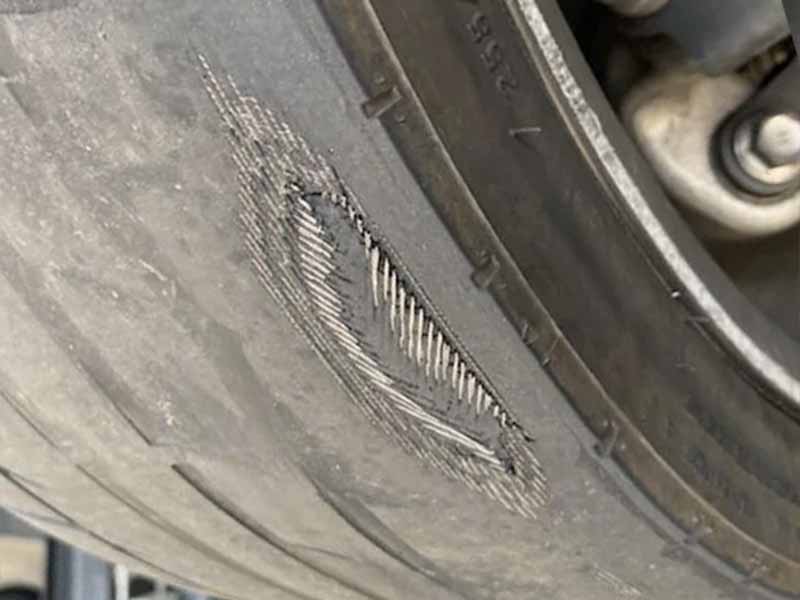
What Is Tire Pressure Anyway?
Tire pressure is just the amount of air inside your tire. This air pushes against the tire’s walls, giving it shape and firmness. It’s usually measured in “PSI” which stands for “pounds per square inch.” Don’t worry too much about the fancy term – it’s just a way to measure how hard the air is pushing.
- Correct Air Pressure: This is the “Goldilocks zone” for your tires. Not too much, not too little. It’s just right! It means your tire has the perfect amount of air to work its best.
- Low Pressure: If your tire doesn’t have enough air, it’s said to have low pressure. It’s like having a partly filled balloon that flops around.
- High Pressure: Too much air in your tire? That’s high pressure. It’s like overfilling that balloon and hoping it won’t burst.
Why Should I Care?
Great question! Let’s break it down:
- Ride Smoothness: Proper tire pressure makes your ride smoother. Imagine riding a bike with half-flat tires. Not fun, right?
- Save Money: Tires with the right pressure can last longer and help your car use less gas. That means fewer trips to the tire shop and gas station. Cha-ching!
- Safety First: Tires at the correct air pressure can stop faster and hold the road better, especially in wet weather. We all want to keep our rides safe!
Recommended Tire Pressure
Every car or truck has a magic number. It’s the recommended tire pressure. But where do you find it?
- Doorjamb: Open your car’s driver-side door and look around the edge. There’s often a sticker there with lots of info, including the magic number.
- Owner’s Manual: That book in your glovebox isn’t just for decoration. Flip through it, and you’ll find the recommended tire pressure.
Resources
Below are some links you may find helpful when learning about tires
- TPMS light coming on in cold weather? Here’s why – Les Schwab
- What you should do when a tire-pressure light flashes – Car and Driver
Final Thoughts
Low tire pressure can stem from various causes, from sneaky punctures to the unpredictable dance of seasonal temperature changes. Ignoring it isn’t just a ride on the bumpy side; it can also compromise our safety, wallet, and vehicle performance.
But here’s the silver lining: with regular checks, a trusty tire pressure gauge, and some seasonal vigilance, we can stay ahead of these issues. By understanding the nuances and taking timely action, we ensure that our rides are smooth, safe, and fuel-efficient. In essence, a little attention to tire pressure goes a long way in making our journeys memorable for the right reasons.
Good luck and happy motoring.
